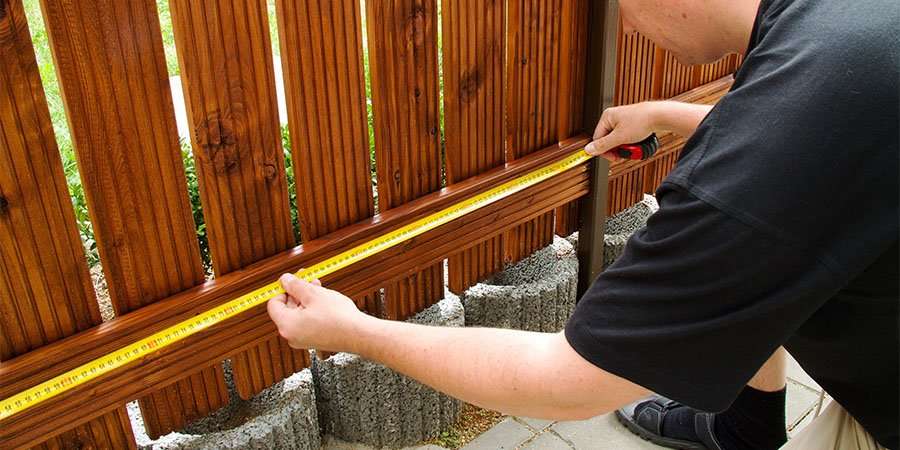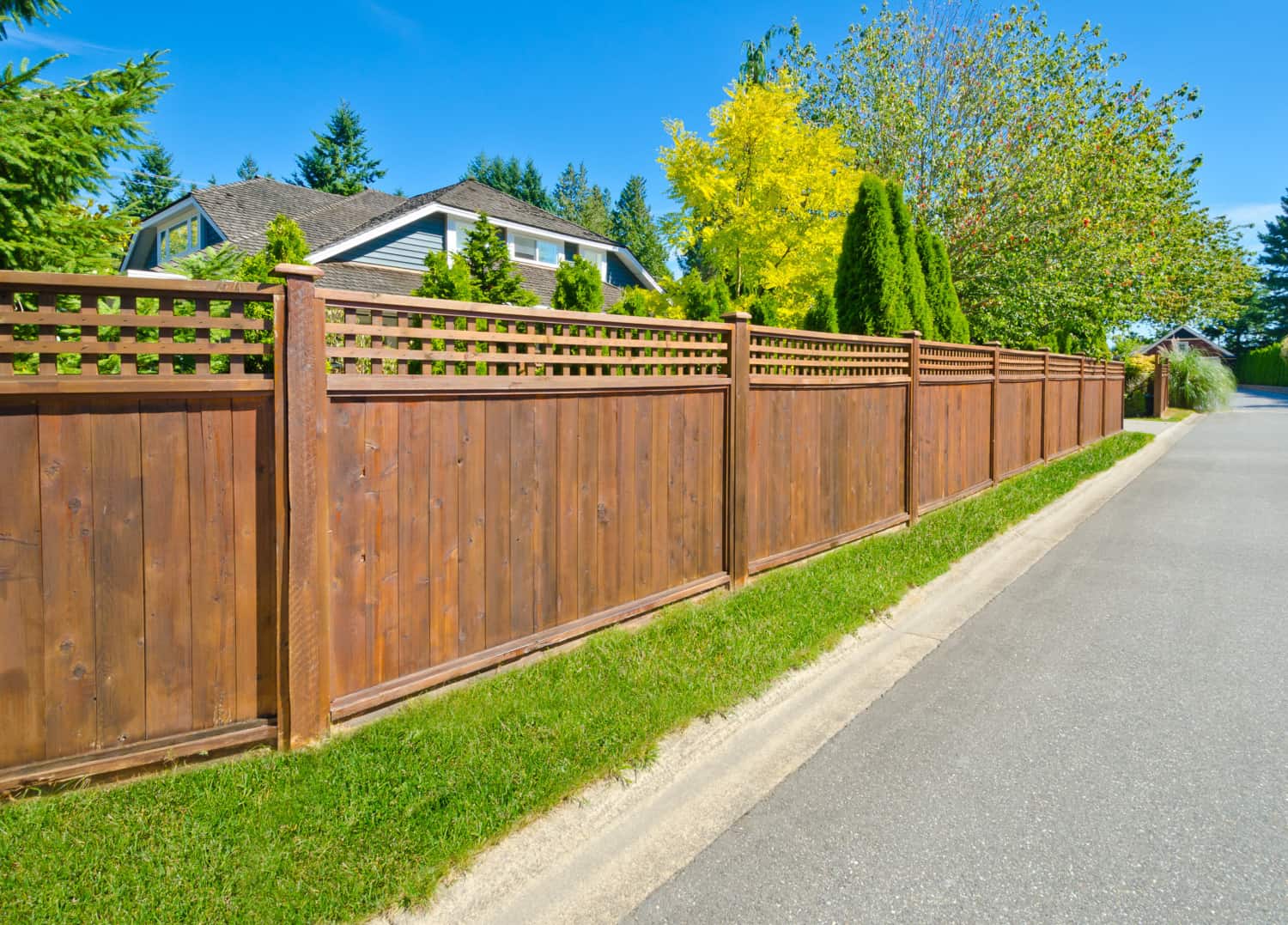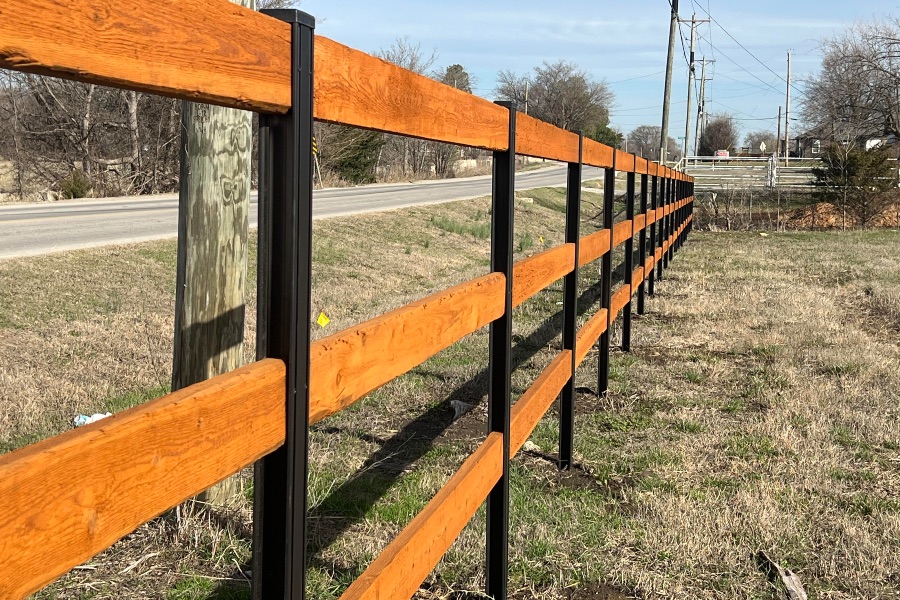All Categories
Featured
When considering a fencing project, understanding the aspects that impact the cost is essential to make a notified decision. The final rate can differ considerably based upon several elements, from the materials you choose to the complexity of the setup. By taking these factors into account, you can guarantee that your fence not only fits your budget yet also satisfies your requirements for personal privacy, protection, and aesthetic appeals. Here are some of the vital elements that influence the expense of a secure fencing project.
Wood Fencing: Timber is a traditional option for domestic fencing due to its all-natural appearance and versatility. The price of timber can differ depending on the type of timber, such as yearn, cedar, or redwood. Pressure-treated timber is often a lot more affordable, while premium alternatives like cedar and redwood often tend to be extra costly. Furthermore, wood fences need ongoing upkeep like discoloration and sealing to secure them from the elements, which can contribute to long-term expenses.
Vinyl Fence: Vinyl fences are a preferred option as a result of their sturdiness and low upkeep. While they might have a greater in advance cost than timber, plastic fencings last longer and don't need repainting or sealing, making them an affordable choice over time.
Metal Fence: Wrought iron or aluminum fences are generally much more expensive as a result of the materials made use of and the production process. While these fences provide remarkable strength and sturdiness, they come at a greater price factor. Aluminum is an extra budget friendly alternative compared to functioned iron, but both kinds are very efficient at offering security.
Chain-Link Fence: Chain-link fencings are normally one of the least expensive alternatives for boundary secure fencing. While they do not supply the very same personal privacy as various other materials, they are highly inexpensive and can be strengthened with personal privacy slats if required.
The product you choose will certainly depend upon your aesthetic choices, durability needs, and spending plan, so it's vital to stabilize your top priorities when choosing.
Height: Taller fences commonly cost extra, as they require more materials to construct. A 6-foot privacy fencing will be a lot more pricey than a 4-foot decorative fence due to the extra elevation, articles, and panels required. If you need additional elevation for protection purposes, this can also increase the cost.
Length: The longer the fence, the greater the cost. Whether you're fencing a little lawn or a larger home, the complete size of the fencing straight influences how much product will be needed and the length of time the installation will certainly take. A larger location will incur a lot more labor and material expenses.
![]()
Sloped Surface: Fence a sloped backyard needs special modifications to ensure the fence is set up appropriately. This can suggest a lot more labor and personalized adjustments to accommodate the angle of the incline, enhancing the total cost.
Rocky or Difficult Dirt: If the dirt is rocky or dense, excavating blog post openings can be a lot more difficult and call for special tools or devices. This raises both the time and expense of the installment.
The surface on your home may call for added know-how and tools, which will inevitably raise the project's expense.
do it yourself vs. Professional Installation: Choosing DIY installment can conserve you money on labor, yet it is very important to recognize that installing a fencing can be time-consuming and calls for the right skills and tools. If you're not experienced, there's a danger of making expensive blunders that can cause repair services down the roadway.
Specialist Costs: Employing a professional contractor will certainly add to the expense, but it ensures that the fencing is mounted correctly and securely. Service providers generally bill either by the hour or a flat price relying on the size and intricacy of the job. Complicated layouts, customized functions, and big residential properties might lead to greater labor prices.
Gates: Setting up gateways, particularly custom entrances, can include considerably to the price. Whether you require a little pedestrian entrance or a larger driveway gate, this attribute will certainly enhance both material and labor prices.
![]()
Custom-made Layouts: If you desire a fence with decorative elements, such as special article caps, latticework, or decorative functions, these customizations will certainly feature added costs. Custom layouts can make your fencing stand apart, however they contribute to the rate.
Safety Functions: If your objective is enhanced security, you might wish to include features like barbed wire, electrical fencing, or taller posts. These attributes will raise the cost but provide additional security.
Authorization Fees: Some towns charge a charge for authorizations, and the expense may vary depending upon the size and complexity of the fence.
HOA Regulations: If you reside in a community with a house owners' organization (HOA), added standards may dictate what sort of fence you can install. This can influence your design selection and may result in extra expenses if you require to customize your plans.
![]()
Conclusion. A number of elements figure out the expense of a fence project, including the kind of product, size of the fence, labor prices, and the condition of your home. By understanding these variables, you can much better estimate the cost of your task and choose that fit within your budget plan. Whether you're trying to find a straightforward boundary fencing or a high-security framework, meticulously taking into consideration these elements will guarantee you obtain the most effective value for your investment.
- Sort Of Fence Material. The material you select for your fence has the largest effect on the total cost. Various materials featured varying rate points, maintenance demands, and life-spans.
Wood Fencing: Timber is a traditional option for domestic fencing due to its all-natural appearance and versatility. The price of timber can differ depending on the type of timber, such as yearn, cedar, or redwood. Pressure-treated timber is often a lot more affordable, while premium alternatives like cedar and redwood often tend to be extra costly. Furthermore, wood fences need ongoing upkeep like discoloration and sealing to secure them from the elements, which can contribute to long-term expenses.
Vinyl Fence: Vinyl fences are a preferred option as a result of their sturdiness and low upkeep. While they might have a greater in advance cost than timber, plastic fencings last longer and don't need repainting or sealing, making them an affordable choice over time.
Metal Fence: Wrought iron or aluminum fences are generally much more expensive as a result of the materials made use of and the production process. While these fences provide remarkable strength and sturdiness, they come at a greater price factor. Aluminum is an extra budget friendly alternative compared to functioned iron, but both kinds are very efficient at offering security.
Chain-Link Fence: Chain-link fencings are normally one of the least expensive alternatives for boundary secure fencing. While they do not supply the very same personal privacy as various other materials, they are highly inexpensive and can be strengthened with personal privacy slats if required.
The product you choose will certainly depend upon your aesthetic choices, durability needs, and spending plan, so it's vital to stabilize your top priorities when choosing.
- Fencing Height and Length. The size of the fence you need will straight influence the price. Both the elevation and size of your fencing are key factors to consider when planning a spending plan.
Height: Taller fences commonly cost extra, as they require more materials to construct. A 6-foot privacy fencing will be a lot more pricey than a 4-foot decorative fence due to the extra elevation, articles, and panels required. If you need additional elevation for protection purposes, this can also increase the cost.
Length: The longer the fence, the greater the cost. Whether you're fencing a little lawn or a larger home, the complete size of the fencing straight influences how much product will be needed and the length of time the installation will certainly take. A larger location will incur a lot more labor and material expenses.

- Site Conditions and Terrain. The condition of your building's surface can include considerable costs to the job. Irregular or challenging ground might require extra work to prepare the site for installment, affecting both time and labor prices.
Sloped Surface: Fence a sloped backyard needs special modifications to ensure the fence is set up appropriately. This can suggest a lot more labor and personalized adjustments to accommodate the angle of the incline, enhancing the total cost.
Rocky or Difficult Dirt: If the dirt is rocky or dense, excavating blog post openings can be a lot more difficult and call for special tools or devices. This raises both the time and expense of the installment.
The surface on your home may call for added know-how and tools, which will inevitably raise the project's expense.
- Labor Prices. Labor is a substantial part of the general expense of a fencing project. Whether you select to do it on your own or employ a specialist, labor fees can impact the last cost.
do it yourself vs. Professional Installation: Choosing DIY installment can conserve you money on labor, yet it is very important to recognize that installing a fencing can be time-consuming and calls for the right skills and tools. If you're not experienced, there's a danger of making expensive blunders that can cause repair services down the roadway.
Specialist Costs: Employing a professional contractor will certainly add to the expense, but it ensures that the fencing is mounted correctly and securely. Service providers generally bill either by the hour or a flat price relying on the size and intricacy of the job. Complicated layouts, customized functions, and big residential properties might lead to greater labor prices.
- Additional Functions or Customizations. Added attributes, such as entrances, personalized layouts, or added protection, can enhance the general cost of your fencing installation. These upgrades often feature a higher price as a result of the additional materials and labor included.
Gates: Setting up gateways, particularly custom entrances, can include considerably to the price. Whether you require a little pedestrian entrance or a larger driveway gate, this attribute will certainly enhance both material and labor prices.

Custom-made Layouts: If you desire a fence with decorative elements, such as special article caps, latticework, or decorative functions, these customizations will certainly feature added costs. Custom layouts can make your fencing stand apart, however they contribute to the rate.
Safety Functions: If your objective is enhanced security, you might wish to include features like barbed wire, electrical fencing, or taller posts. These attributes will raise the cost but provide additional security.
- Authorizations and Rules. Prior to beginning a secure fencing project, it is very important to contact local authorities to determine if you require any kind of authorizations or if there specify zoning guidelines you must comply with. Some areas have stringent rules regarding fence elevation, location, and design, which might require extra time and charges to obtain the necessary permits.
Authorization Fees: Some towns charge a charge for authorizations, and the expense may vary depending upon the size and complexity of the fence.
HOA Regulations: If you reside in a community with a house owners' organization (HOA), added standards may dictate what sort of fence you can install. This can influence your design selection and may result in extra expenses if you require to customize your plans.

Conclusion. A number of elements figure out the expense of a fence project, including the kind of product, size of the fence, labor prices, and the condition of your home. By understanding these variables, you can much better estimate the cost of your task and choose that fit within your budget plan. Whether you're trying to find a straightforward boundary fencing or a high-security framework, meticulously taking into consideration these elements will guarantee you obtain the most effective value for your investment.
Latest Posts
Discover Hyundai's Newest Incentives and Deals in Akron
Published Apr 19, 25
1 min read
Montclare Auto Repair: Your Local Specialist for Brake & Engine Repairs
Published Apr 19, 25
2 min read
Full Circle Strategic Marketing - Social Media Strategies That Drives Engagement
Published Apr 19, 25
2 min read
More
Latest Posts
Discover Hyundai's Newest Incentives and Deals in Akron
Published Apr 19, 25
1 min read
Montclare Auto Repair: Your Local Specialist for Brake & Engine Repairs
Published Apr 19, 25
2 min read
Full Circle Strategic Marketing - Social Media Strategies That Drives Engagement
Published Apr 19, 25
2 min read